Crafting a Winning Medical Billing Specialist Cover Letter
A well-crafted medical billing specialist cover letter is your first impression on a potential employer. It’s your opportunity to showcase your skills, experience, and enthusiasm for the role. Unlike a resume, a cover letter allows you to tell a story, connecting your qualifications to the specific job requirements and demonstrating your personality. This guide will provide you with the essential components and strategies to create a compelling cover letter that increases your chances of landing an interview and ultimately, your dream job in medical billing. Following these guidelines, you can make your application stand out in a competitive job market and highlight your unique value proposition to the hiring manager.
Understanding the Importance of a Cover Letter
Why a Cover Letter is Crucial
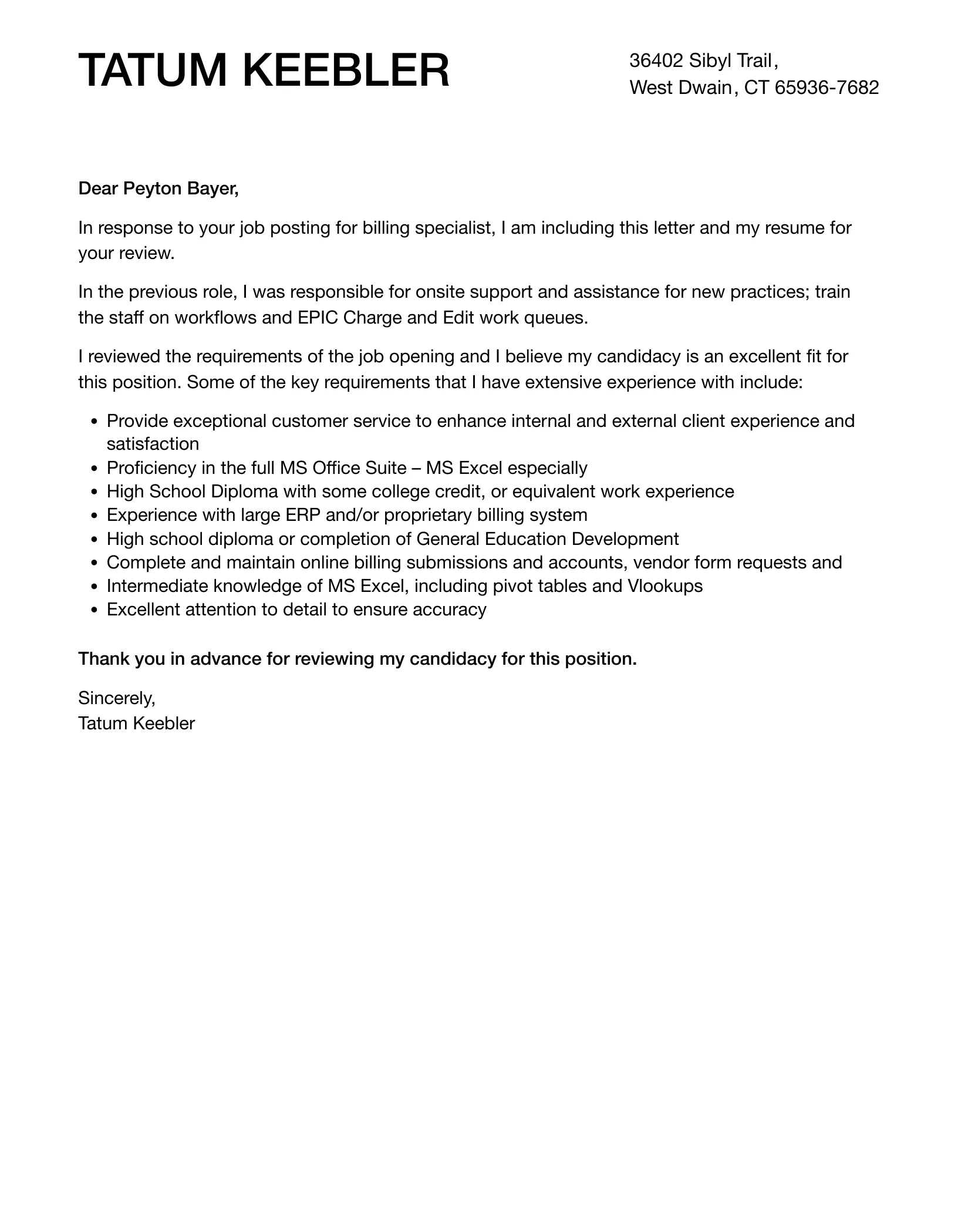
In the realm of medical billing, where precision and attention to detail are paramount, a cover letter serves as a critical bridge between your resume and the hiring manager’s needs. A strong cover letter is not just a formality; it’s a strategic tool that allows you to personalize your application, demonstrating genuine interest in the position and the healthcare organization. It provides context to your resume, explaining how your skills and experiences align with the job description and highlighting your key accomplishments. Additionally, a well-written cover letter can differentiate you from other candidates, showcasing your communication skills and your understanding of the medical billing field. Furthermore, it helps you to present yourself as a well-rounded candidate who is not just qualified, but also a good fit for the company culture.
Highlighting Your Relevant Skills and Experience
Key Skills to Showcase in Your Cover Letter
Medical billing specialists require a specific skill set to excel in their roles. When crafting your cover letter, it’s vital to highlight these key skills to capture the employer’s attention. Emphasize your proficiency in medical coding (such as ICD-10, CPT, and HCPCS), claims processing, and the ability to navigate insurance guidelines. Showcase your experience with billing software, such as Epic, Cerner, or specialized medical billing platforms. Communication skills are equally essential – demonstrate your ability to interact with insurance companies, patients, and healthcare providers effectively. Lastly, highlight your attention to detail and organizational skills, as accuracy in medical billing is critical. Showing a blend of technical skills, communication capabilities, and meticulousness can significantly improve your application.
Quantifying Your Achievements
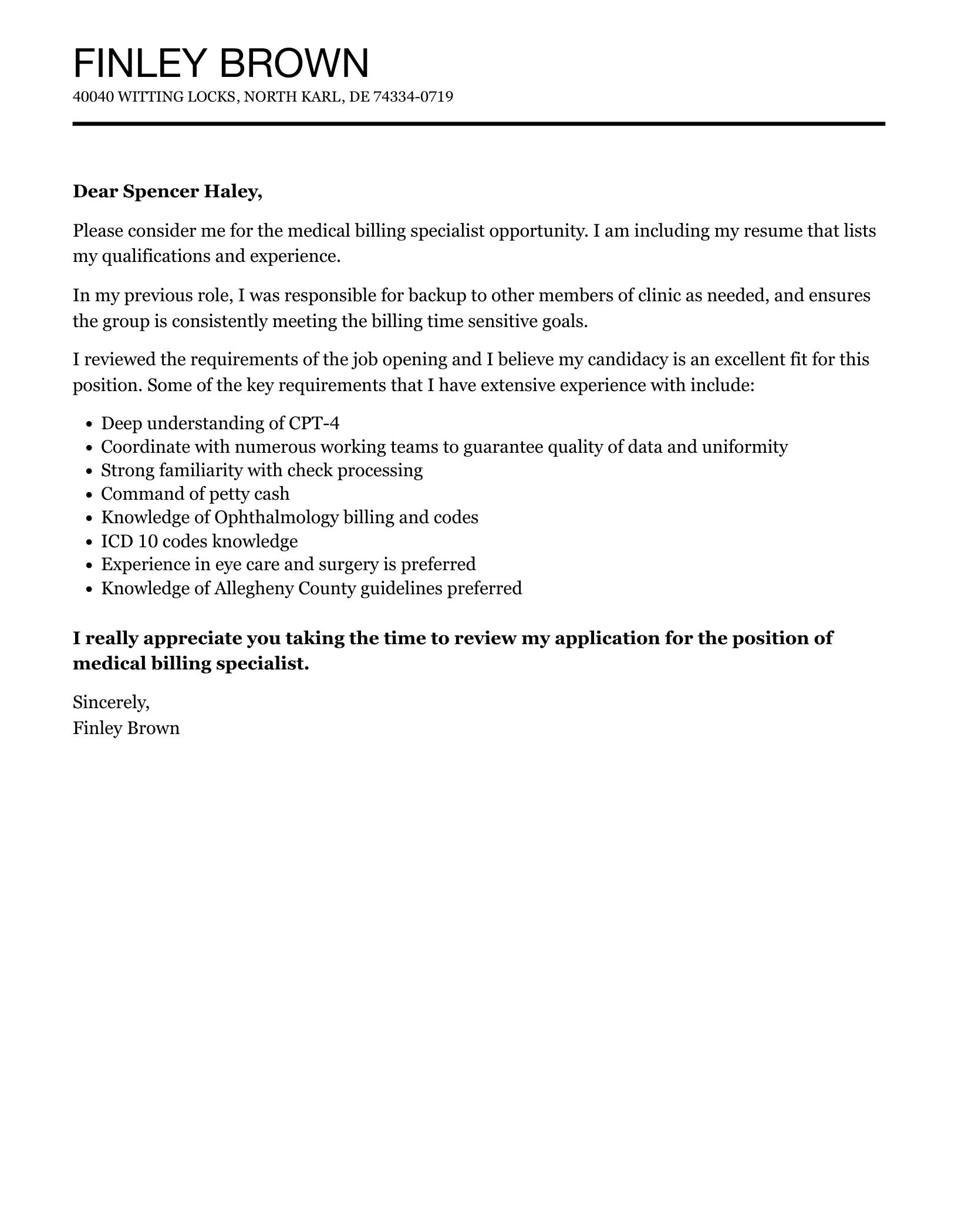
Beyond listing skills, it’s crucial to quantify your achievements. Use numbers and data to demonstrate the impact of your work. Instead of saying ‘Managed billing processes’, state ‘Successfully processed an average of 500 claims per week with a 98% accuracy rate’. If you’ve reduced claim denials, mention the percentage decrease achieved. If you’ve improved revenue cycle efficiency, provide the percentage or dollar amount of the improvement. Examples of accomplishments include reducing accounts receivable, improving payment turnaround times, or increasing patient satisfaction through efficient billing practices. By quantifying your achievements, you provide concrete evidence of your value and demonstrate the tangible results you can bring to the organization. This makes your cover letter more persuasive and memorable.
Structuring Your Medical Billing Cover Letter
Header and Contact Information
Begin your cover letter with a professional header that includes your full name, contact information (phone number and email address), and the date. You should also include the employer’s contact information (name, title, and address if available). Ensure that your contact information is accurate and up-to-date. Using a clear, professional font and formatting for your header is essential. Your goal is to make it easy for the employer to reach you. A well-organized header gives the initial impression of your attention to detail and professionalism. This is also where you would put the date that you are sending the letter.
Opening Paragraph
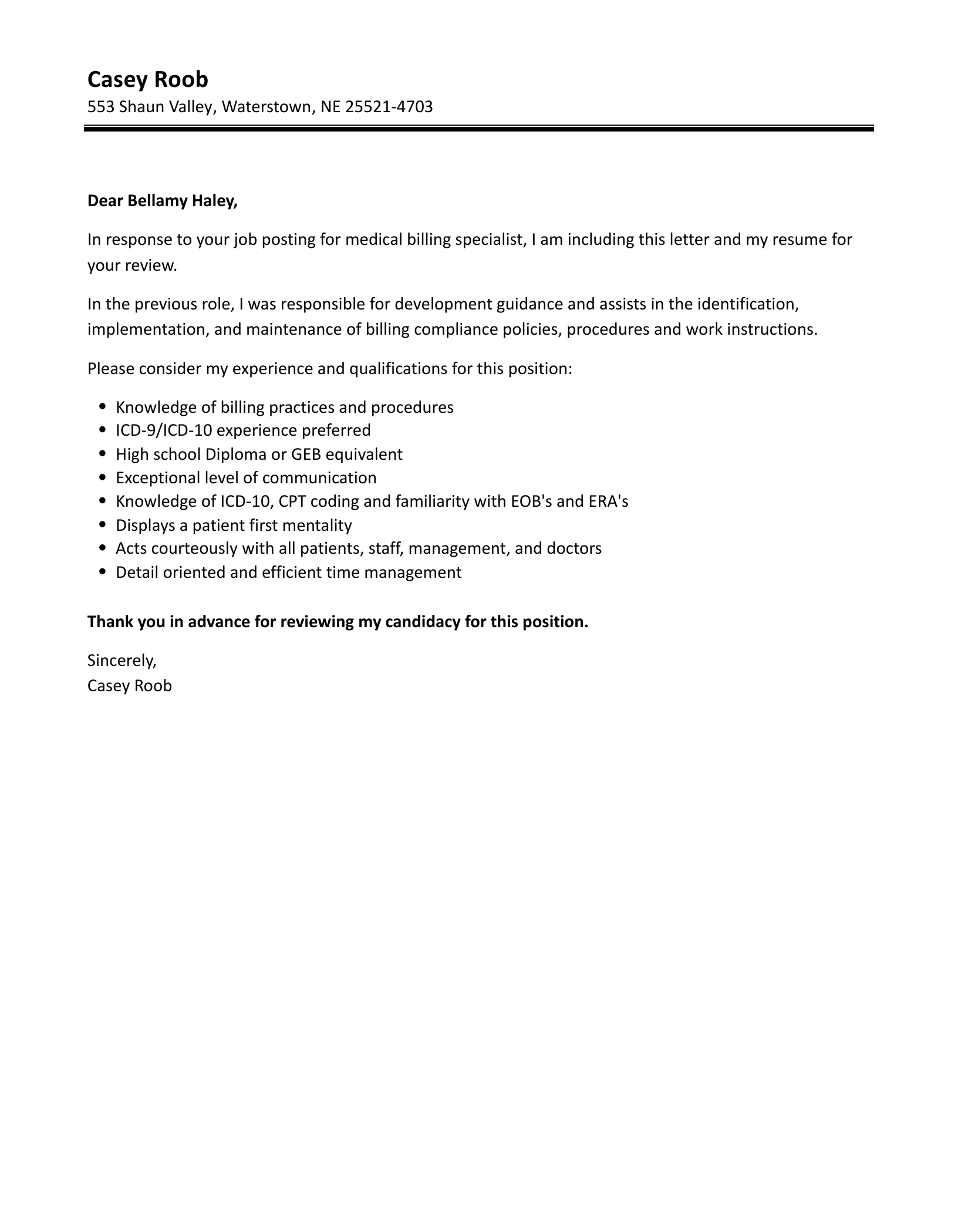
The opening paragraph is your chance to grab the reader’s attention. Start by stating the specific position you are applying for and where you found the job posting. Express your enthusiasm for the opportunity and the company. Briefly mention a key skill or accomplishment that aligns with the job requirements. For example, ‘I am writing to express my keen interest in the Medical Billing Specialist position advertised on [Platform Name]. With over five years of experience in medical billing and a proven track record of reducing claim denials, I am confident I can significantly contribute to your team.’ The opening should be concise, engaging, and set the tone for the rest of your letter. It should make the reader want to learn more.
Body Paragraphs Emphasizing Skills and Experience
The body of your cover letter should delve deeper into your skills and experience. Use 2-3 paragraphs to showcase your most relevant qualifications, emphasizing how they align with the job description. Provide specific examples of your accomplishments, using the STAR method (Situation, Task, Action, Result) to illustrate your skills. For example, ‘In my previous role at [Previous Company], I was tasked with reducing claim denials (Situation). My task was to review and correct rejected claims and resubmit them to the insurance companies (Task). I analyzed denial trends, identified common errors, and implemented a new claim submission process (Action). As a result, we reduced claim denials by 15% within three months (Result)’. Tailor each paragraph to the specific requirements mentioned in the job posting, demonstrating that you have carefully considered the position’s needs.
Closing the Cover Letter
Your closing paragraph should reiterate your interest in the position and thank the reader for their time and consideration. Express your eagerness for an interview and state how you can be reached. For example, ‘Thank you for considering my application. I am eager to learn more about this opportunity and discuss how my skills and experience can benefit your organization. I am available for an interview at your earliest convenience and can be reached at [Phone Number] or [Email Address].’ End with a professional closing such as ‘Sincerely’ or ‘Respectfully’ followed by your full name. Proofread the entire letter before sending it, ensuring that your closing is concise, professional, and leaves a positive lasting impression.
Tailoring Your Cover Letter to the Job Description
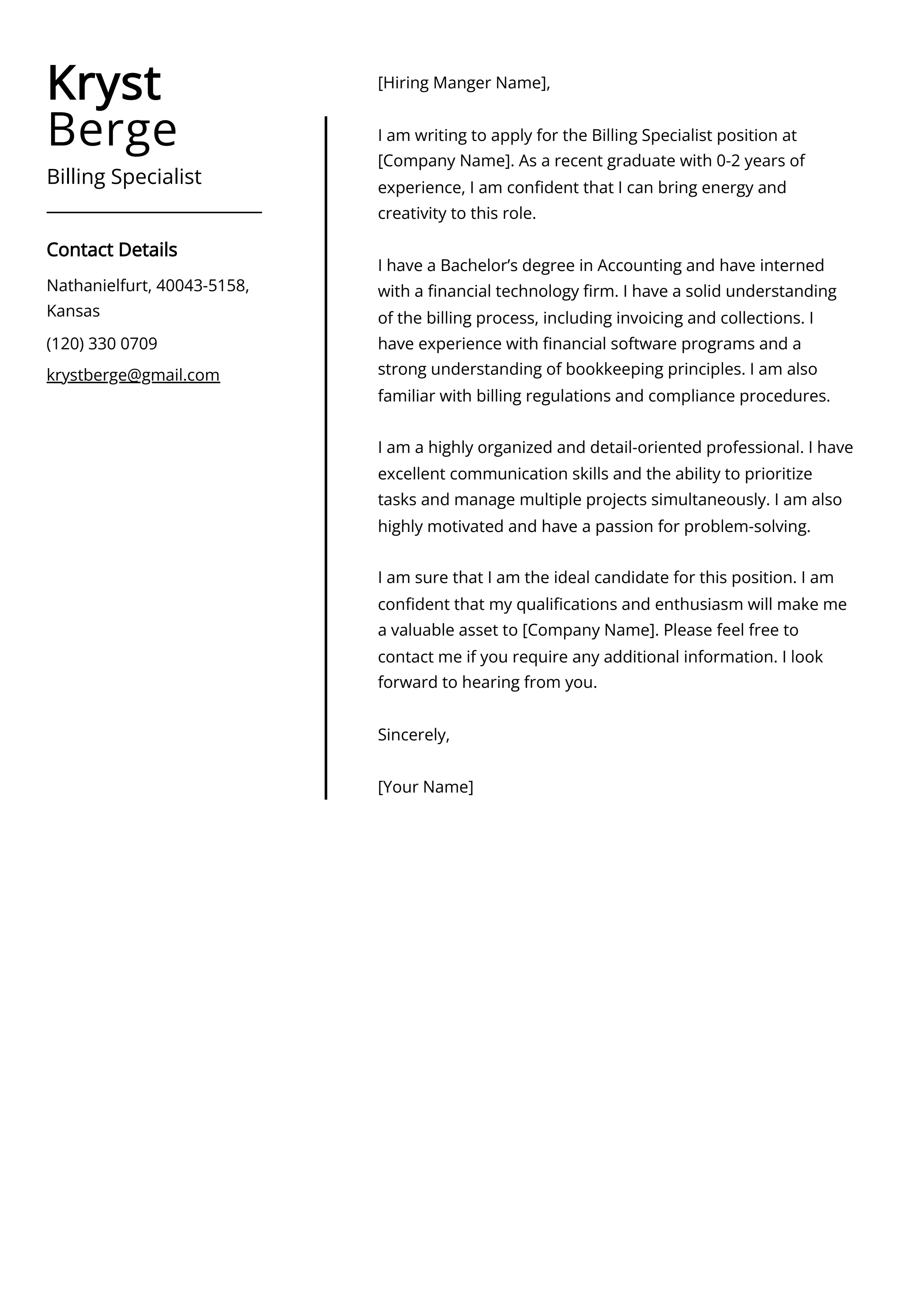
Analyzing the Job Posting
To write a cover letter that stands out, you must first thoroughly analyze the job posting. Carefully read the job description, noting the key skills, qualifications, and responsibilities the employer is seeking. Identify the keywords and phrases used in the posting, and incorporate them into your cover letter where appropriate. Pay close attention to the specific requirements, such as experience with particular software, knowledge of specific insurance plans, or any unique qualifications the employer mentions. Understanding these details will help you tailor your cover letter to match the employer’s needs and demonstrate that you are a strong fit for the role. Use a highlighter to mark the important elements.
Matching Your Skills to the Requirements
Once you have analyzed the job posting, the next step is to match your skills and experience to the requirements outlined. Use the job description as a guide, and structure your cover letter to directly address each key requirement. Provide specific examples from your professional background that demonstrate your abilities. For instance, if the job description emphasizes experience with a specific billing software, describe your proficiency using that software. If the posting requires strong communication skills, provide an example of a time you effectively communicated with patients or insurance providers to resolve billing issues. The goal is to make a clear and direct connection between the employer’s needs and your qualifications, showing why you are the ideal candidate for the position.
Formatting and Design Best Practices
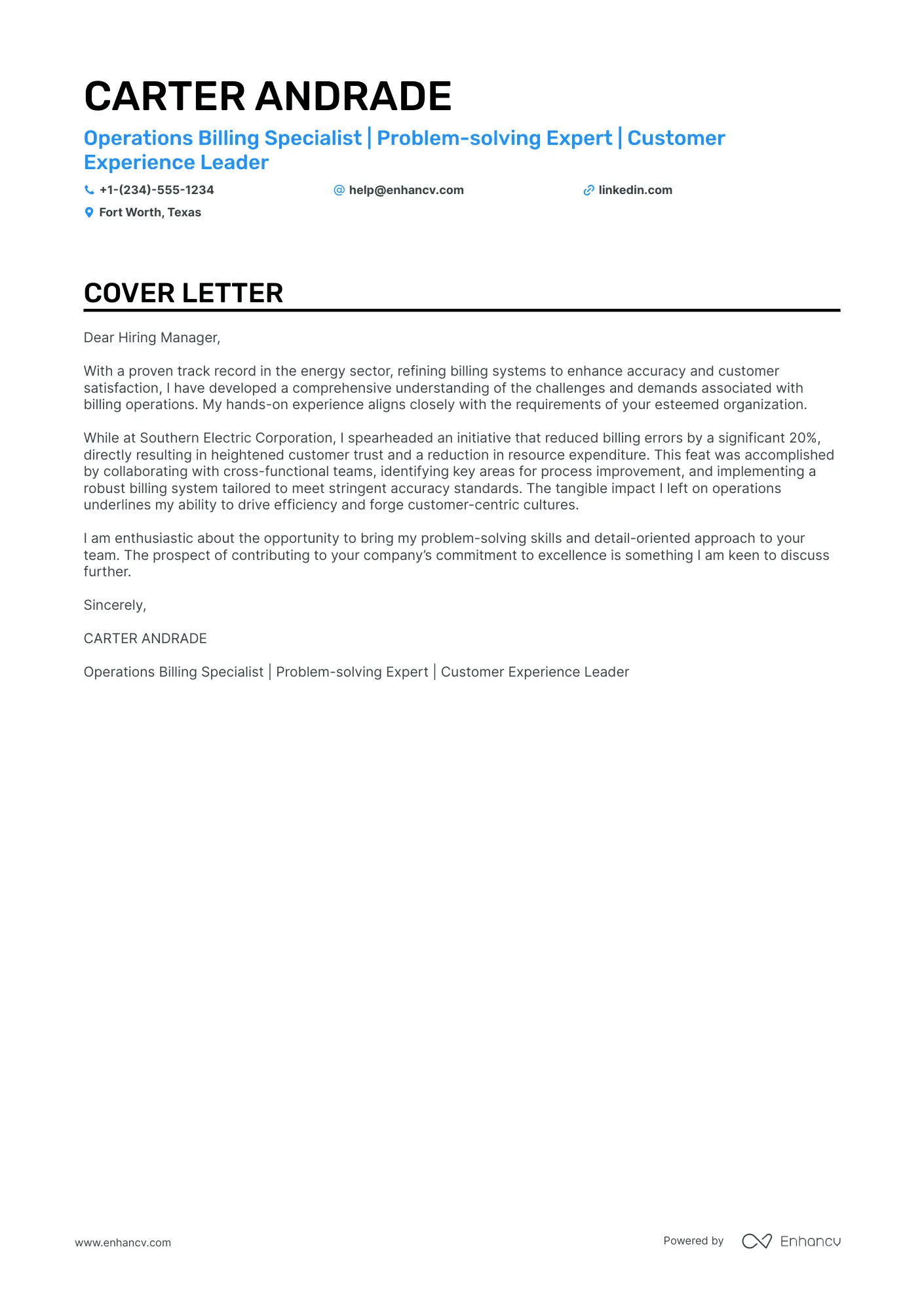
Choosing a Professional Font and Layout
The visual presentation of your cover letter is crucial. Start by choosing a professional, easy-to-read font such as Times New Roman, Arial, or Calibri. Maintain a consistent font size (11 or 12 points) throughout the document. Use single-spacing and add a space between paragraphs. Ensure your margins are set to 1 inch on all sides. The layout should be clean and organized, with clear headings and bullet points (if necessary) to break up large blocks of text. Avoid excessive use of bolding, italics, or underlining, as these can distract from the content. The overall goal is to create a cover letter that is visually appealing and easy for the hiring manager to read and digest. Your cover letter should look as professional as your resume and your online profile.
Proofreading and Editing Your Cover Letter
Before submitting your cover letter, it is essential to proofread and edit it carefully. Check for any spelling errors, grammatical mistakes, and typos. Ensure the language is clear, concise, and professional. Consider having a friend or colleague review your cover letter to provide an objective perspective. They may catch errors you have overlooked. Proofreading is crucial to eliminate mistakes that can undermine your credibility and negatively impact the hiring manager’s impression of you. Pay close attention to names, dates, and other specific details to confirm their accuracy. A polished and error-free cover letter demonstrates your attention to detail and your commitment to excellence.
Common Mistakes to Avoid
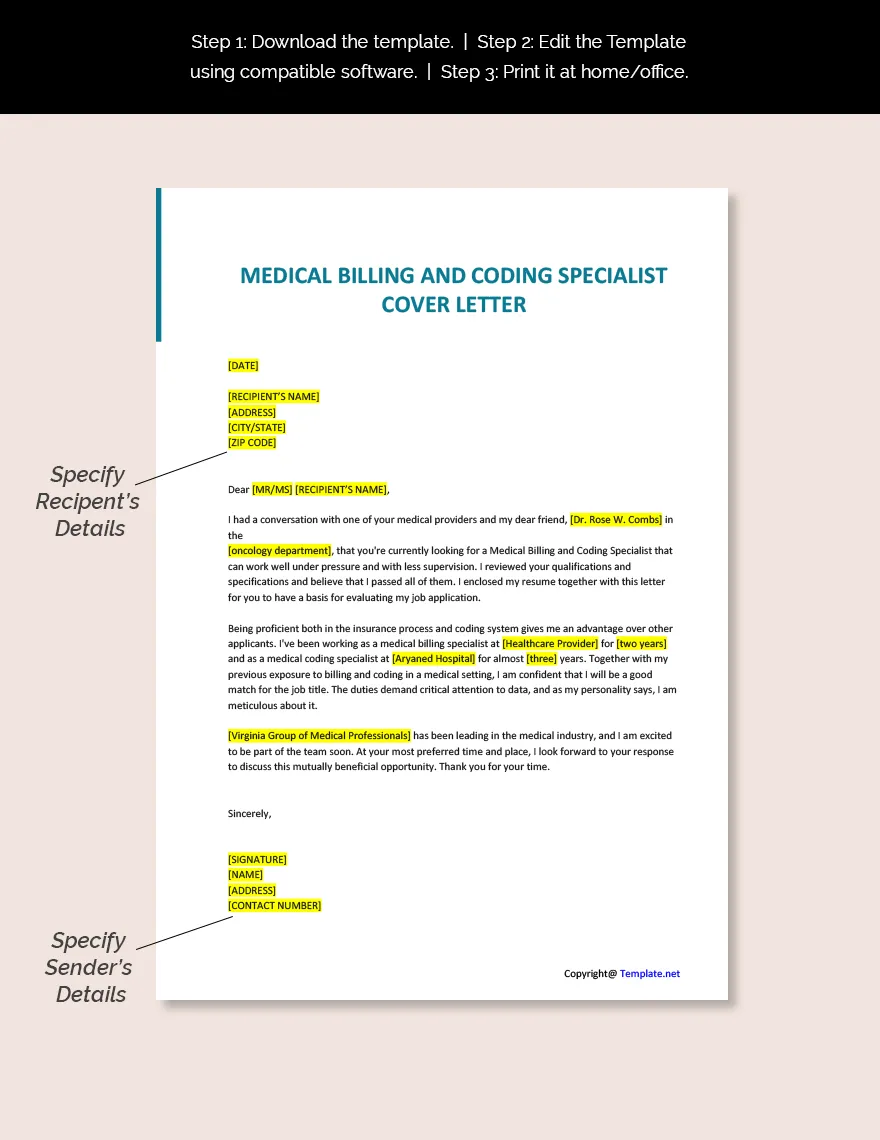
Generic Cover Letters
One of the biggest mistakes is using a generic cover letter that isn’t tailored to the specific job or company. Generic cover letters often feel impersonal and fail to capture the hiring manager’s attention. They lack the unique details that demonstrate your interest in the particular position. Avoid using generic templates without customizing them. Instead, always customize your cover letter to match the specific job description and the company’s values. Research the company and tailor your letter to show that you understand their needs and how your skills and experience can benefit them. A tailored letter indicates that you are genuinely interested in the role and have taken the time to understand their requirements.
Typos and Grammatical Errors
Typos and grammatical errors can be a major turnoff for hiring managers. These errors reflect a lack of attention to detail and professionalism. Always proofread your cover letter carefully before submitting it. Use spell-check and grammar-check tools, but also read the document aloud to catch any mistakes that the automated tools may miss. Ensure your punctuation and sentence structure are correct, and that your writing is clear and concise. Asking a friend, family member, or career professional to review your cover letter is another way to ensure its accuracy. A polished and error-free cover letter shows that you care about making a positive first impression.
The Power of a Strong Closing
The closing of your cover letter is your last opportunity to leave a positive impression. A strong closing should reiterate your interest in the position, thank the reader for their time and consideration, and provide your contact information. It’s essential to end your cover letter on a positive and enthusiastic note. Avoid generic phrases like ‘Thank you for your time’ or ‘I look forward to hearing from you.’ Instead, express your genuine excitement about the opportunity and mention your availability for an interview. A strong closing can set you apart from other candidates and leave a lasting impression on the hiring manager. Make sure that the closing aligns with your overall goals, and is a professional representation of you. A compelling closing can be the final push that gets you your dream job. Good luck!
